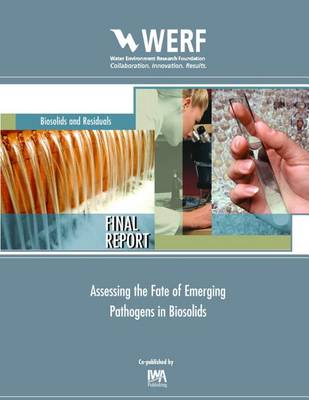This report is available as a pay-per-view item only.
The US federal rule that regulates the land application of biosolids, 40CFR Part 503, requires that the materials meet certain microbiological standards prior to application. For unrestricted use (Class A), these standards are based on a combination of treatment standards and indicator bacteria limits (i.e., fecal coliform bacteria) or a single pathogenic bacterium, Salmonella. Class B biosolids, which have undergone treatment processes to reduce, but not eliminate, pathogens can also be used in land application programs if specified access and use limitations are observed. Since this regulation was developed, a number of pathogenic microorganisms have emerged as being of potential public health concern. However, data on their fate in biosolids treatment processing as well as their ability to survive and be transported in the environment after land application is lacking. Thus, there are questions about potential health hazards associated with the land application of biosolids.
The purpose of this project was to conduct research on the fate of emerging pathogens during biosolids treatment and subsequent application on land. The specific objectives of this research were to: 1) assess the fate of several emerging pathogens (e.g., adenoviruses, hepatitis A virus, E. coli O157:H7, Listeria, and Cryptosporidium) during Class A and Class B biosolids treatment processes; 2) based on the results of 1, assess the fate and transport of the most significant organisms in biosolids applied to soil columns; and 3) assess the potential for selected pathogens to survive and be transported at a field site.
The research was conducted in three phases. In Phase 1, pathogens, including selected bacteria, viruses, and parasites were added to water and/or microcosms to simulate Class A and Class B treatment processes to assess their relative potential for survival. The organisms that survived in the highest numbers or in numbers that represent the highest risk were chosen for further study in Phase 2. These organisms were E. coli, Clostridium perfringens spores, Listeria, and bacteriophage phiX174. This involved spiking treated biosolids with the pathogens, then applying the material at typical rates to soil columns. The third phase of the study evaluated the transport and fate of the chosen organisms in a field setting. A lysimeter was instrumented to allow for collection of unsaturated soil samples, ground water samples, runoff samples, and air samples. Neither C. perfringens nor L. innocua were found to move through the soil columns, regardless of soil type or flow rate. E. coli was able to grow in the columns run at 22 degrees C. As expected, phiX174 exhibited the greatest potential for transport through the soils. The results of the column studies closely mirrored those of the field studies. More transport was observed in the sand than in the loam soil; no microorganisms were detected in any of the air samples collected.
- ISBN10 1843397617
- ISBN13 9781843397618
- Publish Date 30 September 2007
- Publish Status Active
- Publish Country GB
- Imprint IWA Publishing
- Format eBook
- Pages 166
- Language English
